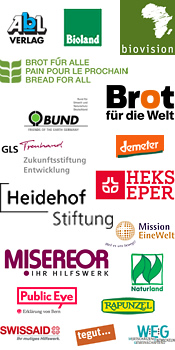Nachricht
16.09.2015 | permalink
Land degradation costs the world $10.6 trillions a year: report

Land degradation costs the world trillions of dollars worth of nature’s benefits each year and could force the migration of millions of people from affected areas, a new UN-backed report has warned. The report, published on Tuesday by the Economics of Land Degradation (ELD) Initiative, estimates the value of ecosystem services provided by land such as agricultural production, water filtration, nutrients cycling and climate, but also the importance of land in reducing poverty and food insecurity. According to the authors, land degradation is costing the world US $6.3 trillion to $10.6 trillion annually, or the equivalent of 10-17% of global GDP. More than half of the world’s agricultural land is moderately or severely degraded. The report cites figures from the UN’s Convention to Combat Desertification (UNCCD), which say that land degradation may drive an estimated 50 million people from their homes within the next 10 years. “We do not value our land resources,” warns UNCCD Executive Secretary Monique Barbut, “Land degradation eats away at our fertile land. That is our common resource base.” Land degradation is not only affecting agricultural production, it also means that less land is available to to store carbon. According to the report, soil is second only to oceans as the planet’s largest carbon sink, while agriculture and land use changes represent the second largest source of greenhouse gas emissions. Addressing land degradation and its causes therefore represents a double-sided way to reduce greenhouse gas emissions, could help avert a humanitarian crisis and add US $75.6 trillion to annual world income, the authors write. They call for the implementation of more sustainable land management in order to tackle environmental and socio-economic challenges such as food, water, and energy security, climate change and the loss of biodiversity. The report recommends various instruments for policy makers to enable the adoption of sustainable land management. These include bans to ensure that products harmful to health or environmental quality such as pesticides are not used; taxes and fees to raise the cost of production or consumption of environmentally damaging goods and subsidies for those who implement sustainable land management practices. The Sustainable Development Goals (SDGs), to be adopted by the UN later this month, also focus on land resources. Goal 15 aims to “Protect, restore and promote sustainable use of terrestrial ecosystems, sustainably manage forests, combat desertification, and halt and reverse land degradation and halt biodiversity loss.” (ab)

